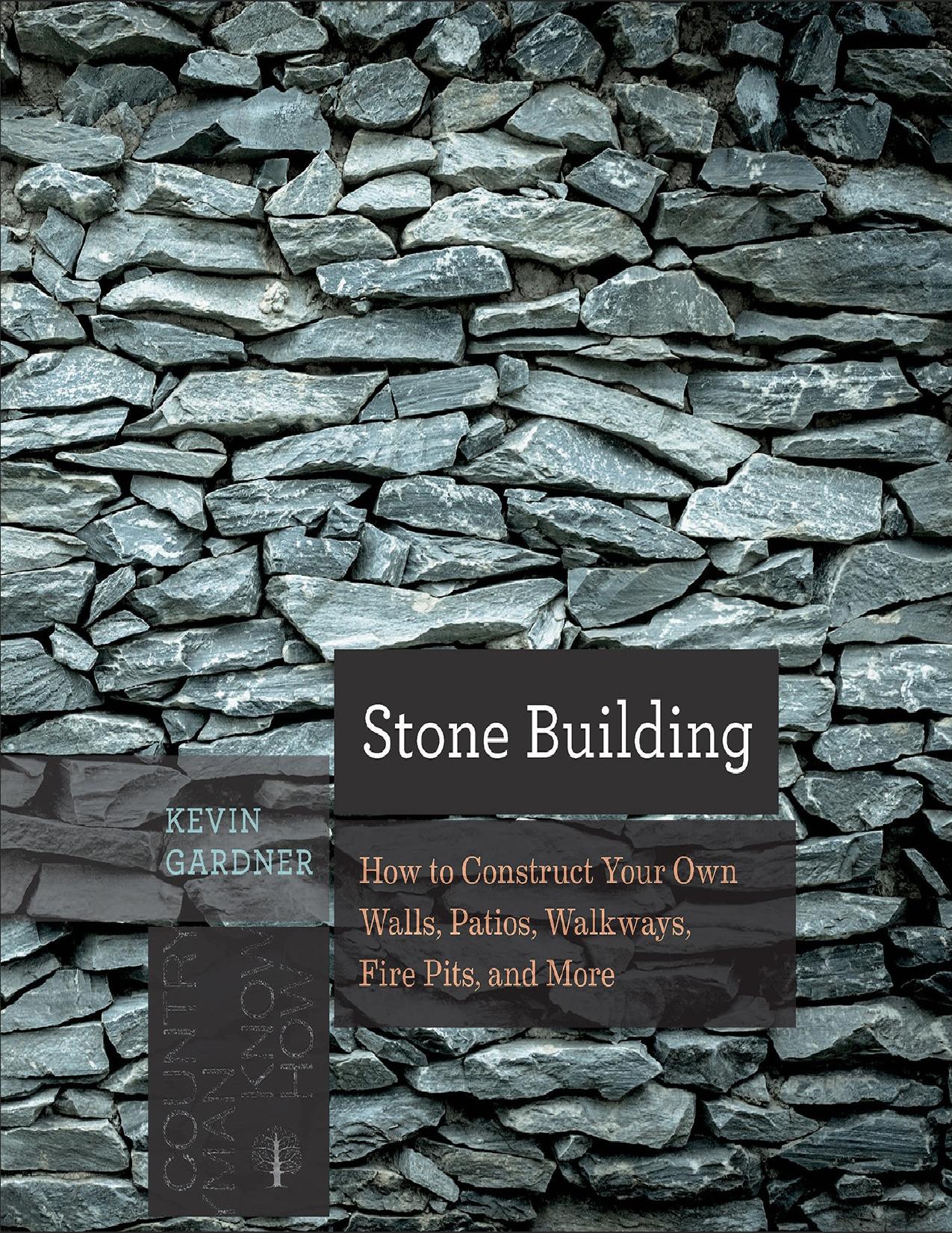Stone Building by Kevin Gardner

Author:Kevin Gardner
Language: eng
Format: epub, pdf
Publisher: Countryman Press
Published: 2017-01-22T05:00:00+00:00
CHAPTER 4
At the Musterfield Farm Museum in Sutton, NH, the solid bulk of a double-faced roadside wall harmonizes easily with the classic Yankee barn across the way.
Planning and Design
_____________
I did some repair work recently on a relatively new wall in my neighborhood. The wall sits in the middle of the lawn of a large house on a little rolling hilltop lot. It’s about thirty-five feet long, slightly s-curved, perhaps twenty-eight inches wide and a little over three feet high. The wall should not have needed repairs after only about twenty years of life, but it was built a bit too narrow for its height, so its two butt ends, somewhat carelessly laid, were beginning to fall apart. I remembered thinking, while watching it under construction years before, that one day I would be fixing those ends.
But collapsing butt ends are not this wall’s principal failing. The real problem is its design. All alone in the middle of an expanse of grass, it is connected to nothing, expresses no purpose, does not mark any boundary or topographical change. It protects no flower beds or shrubbery, and isn’t close enough to the road or the house to be visually associated with either. Perfectly attractive by itself, it fails as design because it has no job, no part to play in the landscape. It’s an orphan remnant of an unrealized idea. No one would mistake it for a traditional piece of stonework.
Making decisions about where to put a wall, its function, dimensions, style, and spatial relationships to topography and other features of the landscape was probably simpler in the old days than it is now. Farm layouts are governed more by use than by appearance, and their traditional alignments tend to take advantage, when they can, of whatever natural warmth, light, and protection from wind and weather may be available. This is especially true in the northeast, where winters are harsh and the sun’s angle changes radically from season to season. One of the ways to distinguish an old house from a newer one, for instance, is to note the direction that its main entrance (the everyday door, not the formal one) faces. Houses built after central heating and the automobile became common are usually aligned to the passing road, or to their own driveways. Older farmsteads turn their faces to the sun wherever possible, so that their dooryards—the important transitional space outside the kitchen or other regular entrance—is facing south or east, where it will be warmed quickly in the morning and sheltered from north and west winds by the building itself. Barns and barnyards, even fields, are often placed the same way. Their points of reference are the compass and the lay of the land, not the road or the connecting driveway.
The layout of stone walls on an old farm is generally centered on the cluster of buildings at its core, but largely determined by topography and function. Enclosed spaces for mowing, pasture, and planting were smaller and more numerous in the days before farming’s nineteenth-century mechanization.
Download
This site does not store any files on its server. We only index and link to content provided by other sites. Please contact the content providers to delete copyright contents if any and email us, we'll remove relevant links or contents immediately.
Turbulence by E. J. Noyes(7033)
The Thirst by Nesbo Jo(5779)
Gerald's Game by Stephen King(3913)
Be in a Treehouse by Pete Nelson(3206)
Marijuana Grower's Handbook by Ed Rosenthal(3114)
The Sprouting Book by Ann Wigmore(3050)
The Red Files by Lee Winter(2909)
The Remains of the Day by Kazuo Ishiguro(2614)
Sharp Objects: A Novel by Gillian Flynn(2440)
Christian (The Protectors Book 1) by L. Ann Marie(2393)
Organic Mushroom Farming and Mycoremediation by Tradd Cotter(2304)
The Culinary Herbal by Susan Belsinger(2056)
Stone Building by Kevin Gardner(1992)
The Starter Garden Handbook by Alice Mary Alvrez(1922)
Lilac Girls by Martha Hall Kelly(1868)
The Unlikely Pilgrimage of Harold Fry by Rachel Joyce(1834)
The Lean Farm Guide to Growing Vegetables: More In-Depth Lean Techniques for Efficient Organic Production by Ben Hartman(1782)
Urban Farming by Thomas Fox(1748)
Backyard Woodland by Josh VanBrakle(1586)
